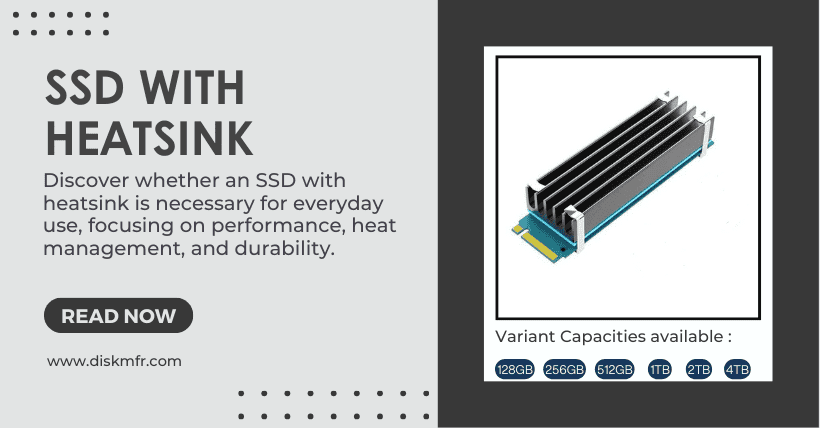The primary heat-generating components in an SSD include:
- Controller Chip – This is the hottest component.
- Power Management Chip – Second hottest.
- DDR and NAND Chips – While these don’t generate as much heat, NAND flash memory is particularly sensitive to high temperatures. Excessive heat can cause the electric charges stored in NAND cells to become more active, potentially leading to data degradation over time if the SSD stays in a high-temperature environment for too long.
01
SSD Thermal Protection
To prevent overheating, SSDs are equipped with thermal protection mechanisms. When temperatures rise too high, the SSD will actively throttle performance or, in extreme cases, shut down to prevent further temperature increases and avoid damaging data. This protection is typically based on the NAND temperature and is often triggered around 70-77°C.
02
Do You Need an SSD with Heatsink?
Whether you need an SSD with a heatsink depends on two main factors:
- Usage Scenario:
- In laptops, space is limited, and they may not support an SSD heatsink due to size constraints.
- SSD Performance:
- For high-performance PCIe 4.0 SSDs running at full capacity, a heatsink is recommended. It helps maintain long-term stability and data integrity by keeping the SSD within safe temperature limits.
- For PCIe 3.0 SSDs or lower-performance PCIe 4.0 SSDs, a heatsink is generally not necessary. These SSDs tend to run cooler due to their lower power consumption, so overheating is less of a concern.
In summary, high-performance SSDs benefit from additional cooling, but lower-performance models usually don’t require a heatsink, making it an optional consideration based on your specific needs.

Disclaimer:
- This channel does not make any representations or warranties regarding the availability, accuracy, timeliness, effectiveness, or completeness of any information posted. It hereby disclaims any liability or consequences arising from the use of the information.
- This channel is non-commercial and non-profit. The re-posted content does not signify endorsement of its views or responsibility for its authenticity. It does not intend to constitute any other guidance. This channel is not liable for any inaccuracies or errors in the re-posted or published information, directly or indirectly.
- Some data, materials, text, images, etc., used in this channel are sourced from the internet, and all reposts are duly credited to their sources. If you discover any work that infringes on your intellectual property rights or personal legal interests, please contact us, and we will promptly modify or remove it.








